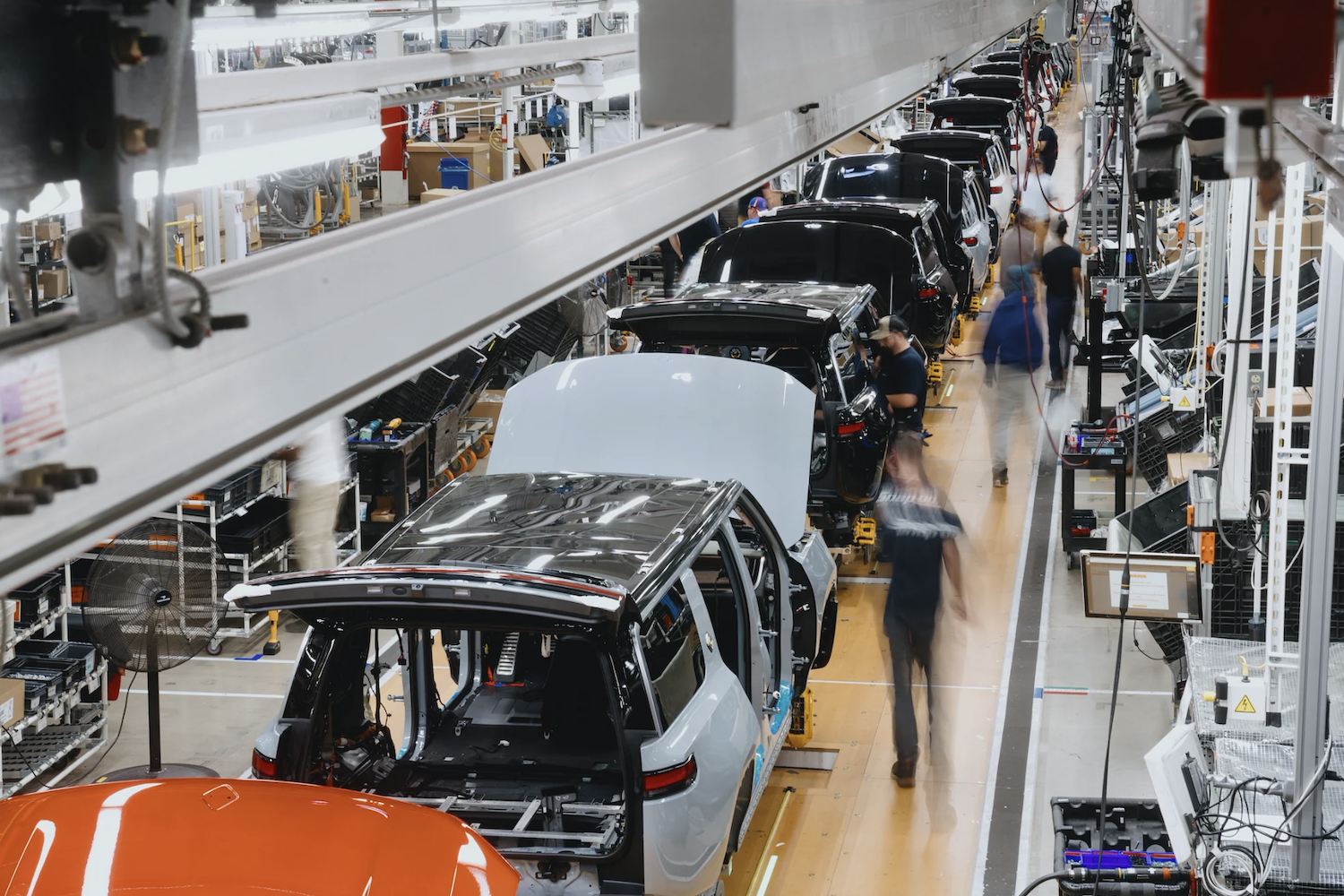
Even as clean energy and electric vehicle investment retracts, some are still marching forward. The EV company Rivian, for example, continues to expand investment in its U.S. manufacturing operations in Illinois — including a new supply chain hub announced last month. (Image credit: Rivian)
The abrupt shift in federal energy policy this year has already dampened investor enthusiasm for major clean energy projects in the United States. But some investors are staying persistent, and new financing solutions are beginning to take shape.
The 2022 Inflation Reduction Act provided incentives for clean energy projects and green job creation through new manufacturing ventures, and the initial results were spectacular. More than 200 new clean energy projects were announced in 38 states across the country within a year, according to tracking from the nonprofit business and investor coalition E2.
The rapid pace of project announcements continued through 2024, but since the inauguration of President Donald Trump in January, both the White House and the Republican-led Congress have taken steps to throttle down investor interest in clean energy.
The results are predictable. While some new projects were announced this year, many others have been downsized or cancelled altogether. Around $1.4 billion in clean energy projects were cancelled in May alone, bringing the year-to-date total to $15.5 billion in cancelled projects, according to E2's most recent tracking.
Despite the sour news overall, E2 registered eight new projects totaling $444 million in its tracker, indicating continued strength in some sectors of the energy transition. Specifically, five of the eight projects involve the manufacture of high-powered transformers and other equipment needed to expand and modernize the nation’s electricity grid. Aside from accommodating the sudden boom in data center construction, new grid infrastructure supports the expansion of clean energy and electric vehicles.
Among the remaining three projects, the startup Rivian signaled confidence in the domestic EV market with a nearly $120 million investment to establish a supply chain hub in Illinois — which will serve its existing 4.3 million square foot manufacturing complex in the state. The company is also expanding operations into Georgia, with plans to employ thousands of people to assemble more than 400,000 vehicles per year. Also in Illinois, the Canadian manufacturer Damera announced $31.5 million toward the construction of its first U.S. factory, aimed at making, selling, and leasing electric mini-buses. Rounding out the eight projects is a new solar panel recycling facility in New Jersey that is supported by a wide network of recycling and manufacturing stakeholders.

From green banks to sustainable agriculture, new players move to fill gaps in U.S. clean energy investment
State-based green banks are also starting to expand their portfolios to fill gaps in federal support for energy transition projects. New York's NY Green Bank — which launched in 2013 and made its first loan for EV charging infrastructure in February of this year — is one example.
Non-state entities are also stepping in. One example is the not-for-profit California electricity provider MCE, which this month issued more than $1 billion in tax-exempt bonds to support its clean power purchases. MCE expects the bond offering to save customers $65 million over the next 10 years while supporting investments in wind, solar and geothermal energy.
“By paying for energy upfront, we reduce costs for our customers by about 11 percent. It means more renewable electricity at stable and competitive rates, reduced pollution, and healthier communities,” Maira Strauss, MCE’s VP of finance, said in a statement.
In another new development, last week the Federation of American Scientists joined with the Climate Group and the Center for Public Enterprise to propose a new state and local collaborative model aimed at accelerating clean energy investment, Latitude Media reports. The model focuses on removing permitting barriers and protecting high-impact projects from partisan politics.
Along with stimulating investor interest in clean energy manufacturing, the existing overload of excess carbon in the atmosphere also needs to be addressed. While federal support for new carbon removal systems is now in doubt, nature-based solutions are still a viable option.
One high-impact pathway to emerge is the use of soil sequestration credits to support sustainable agriculture. The carbon credit firm Agoro Carbon, for example, generates credits from its domestic crop and rangeland operations in the U.S., in accord with the VM0042 Improved Agricultural Land Management methodology developed by the organization Verra. “These projects deploy regenerative agricultural practices such as cover cropping, improved grazing and reduced tillage to sequester carbon in the soil while enhancing agricultural resilience, biodiversity, food security and water retention,” Agoro Carbon explains.
Earlier this week, Agoro and Microsoft entered into a 12-year agreement for the delivery of 2.6 million carbon removal credits. Agoro expects that the transaction, described as one of the largest of its kind to date, will serve as a model for sustainable agriculture investments in the U.S.
The Agoro-Microsoft transaction is yet another demonstration that financing for decarbonization, sustainability, and resiliency continues to evolve and grow. The only question is whether or not elected officials can stop acting on the basis of partisan politics, and start acting in the interest of a healthier, more affordable energy profile for the U.S. public.

Tina writes frequently for TriplePundit and other websites, with a focus on military, government and corporate sustainability, clean tech research and emerging energy technologies. She is a former Deputy Director of Public Affairs of the New York City Department of Environmental Protection, and author of books and articles on recycling and other conservation themes.














